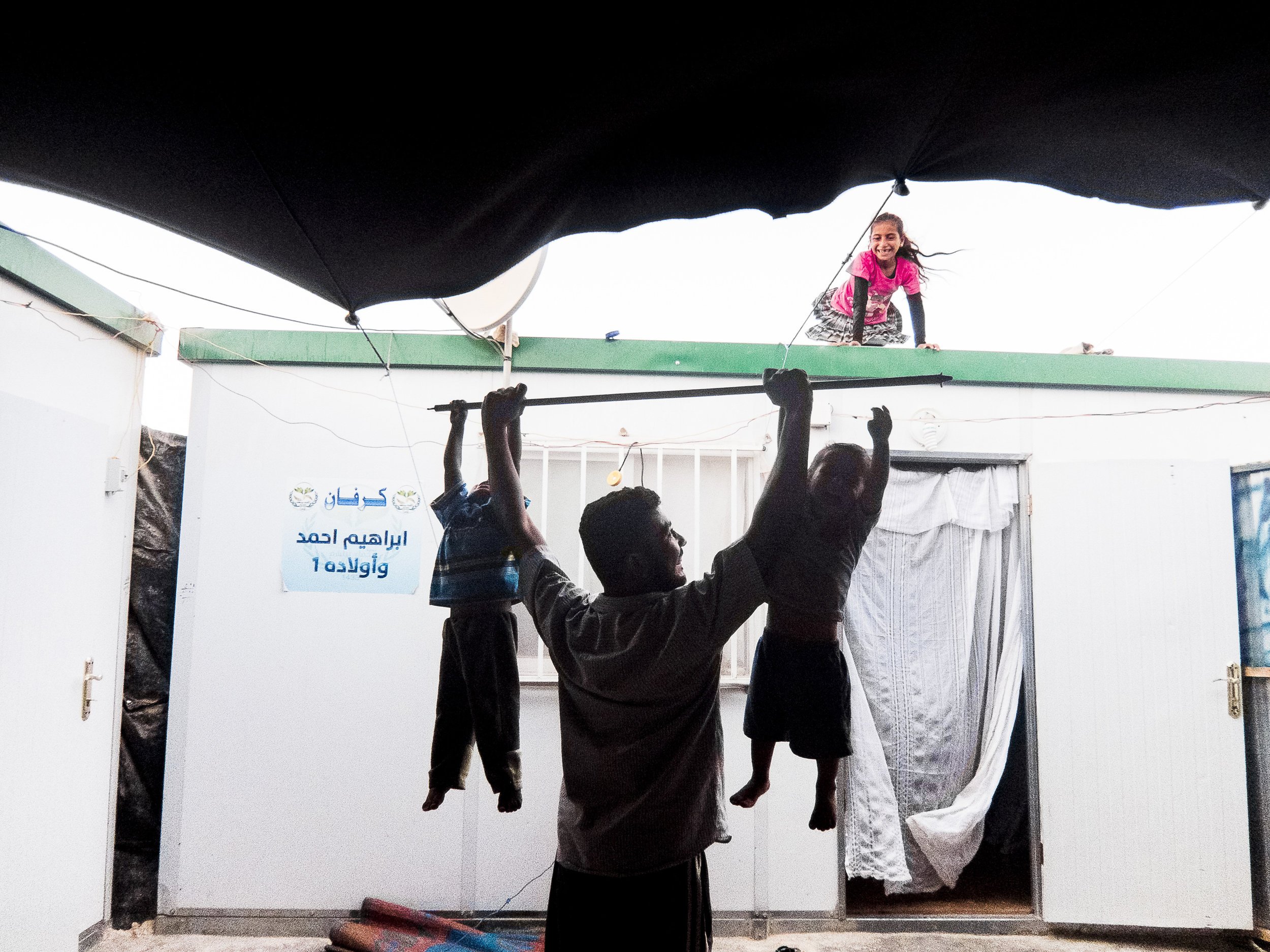War and Consequences, Julian Chinana & Brendan Bannon
by :
Kasey Edgerton
Fatima, Untitled (2019). Photo: Fatima/Courtesy The Most Important Picture Project The photographer’s accompanying text reads: "My family will play and have fun. We will go further. Even if thousands of people are too lazy to help the refugees we will make it through these critical days. A brighter future awaits."
Split between two levels of CEPA Gallery, War and Consequences approaches the time-old topic of war from two different planes of perspective: the complex experiences of a soldier, and the daily realities of Syrian refugee children. While empathetic in intention, a portion of the exhibition bears an unshakable feeling of orchestration, and a deliberate emotional manipulation that is a bit too heavy-handed to be easily digestible.
Beginning in the first-floor Flux Gallery, the exhibition starts with the work of former Marine Scout/Sniper Julian Chinana. A series of inkjet prints of photographs made during his service in Afghanistan and Iraq, titled Resisting Emotion (2019), is paired with several multimedia works grappling with the bittersweet nature of military service awards and Piece of Me (2019), a striking sculptural work comprised of a film negative image adhered across multiple bullet shells. Viewing Piece of Me, I felt a visceral chill and a heavy sadness, when once again made to contemplate the seemingly eternal fact: war never changes. The artist paints a picture of military valor, and praises the discipline and rigid structure that has shaped his life ever since enrollment, while also drawing the title consequences of such into the light. Installing these large images of beleaguered looking soldiers, and taking such deliberate care in the presentation and manipulation of service awards, are potent gestures, and raise the potential for dialogue and inquiry that the artist seems more than willing to pursue.
Upstairs, the second featured artist, Brendan Bannon, has no problem rushing headfirst into divisive content. As an established documentary photographer Bannon is often tasked with sharing the stories of others from around the globe. With his installation in the second-floor, Passageway Gallery, however, he showcases images and texts made by Syrian refugee children who were personally taught by Bannon in his The Most Important Picture workshops. The pairings of image and prose are poetic, moving, and of consistent quality, but prove to be formulaic. Though the goal was to give these children tools to express their own voices and experiences, the result feels more like Bannon had groomed them towards a shared voice and visual style that allowed the gut-wrenching but heart-warming narrative he wanted to weave to emerge.
In an excerpt taken from The Most Important Picture website for Bannon’s project we get the philosophy at the core of his outreach workshops, which is to have, “children express themselves in poignant prose and striking photographs.” While a seemingly harmless vision, the formula does imply a particular form of results. Personally, I would have been keenly interested in seeing images created before the Syrian students had been schooled in composition and the decisive moment.
Overall the show, while ambitious in theme, left me feeling frustrated. The two galleries feel largely unrelated, save for the loose theme around war, although I did appreciate how Julian Chinana’s work filled the first-floor gallery. Chinana’s installation resonates with a deep psychological pulse; it is a vulnerable exploration of a tumultuous lived experience, one that the artist has the bravery to traverse and process in the public eye. The somber lighting and dark tones of the photographs work in perfect concert and left me feeling haunted as I exited the gallery. Leaving Bannon’s installation though, I felt a different kind of haunting, vague discomfort as I questioned the agency and motivations behind the work. The exhibition tries so hard to offer up a profound statement, and promises a powerful experience, but in the end there are unexpected consequences.


